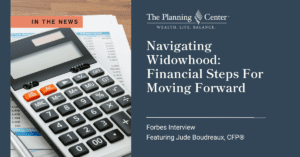[This post is part of the Financial Rules of Thumb series. Check out the rest here!]
Today’s rule of thumb is:
“100 minus your age equals the allocation you should have to equities in your portfolio”
The Upperline: It’s far more important to know how much risk you’re comfortable with, than to use this as a guideline.
This rule of thumb is dangerous not because it’s generally untrue, as I think that this is often a reasonably appropriate guideline for many investors. The problem is, if it’s not right for you, it could have huge consequences. I often hear from investors that they’re taking more risk in their 401k because they’re younger. Conversely I hear from investors nearing retirement that they’re moving their entire portfolio into bonds and Certificates of Deposit.
That may be exactly what they should be doing, but the problem is that those strategies don’t have value on their own. Those strategies only make sense within the context of your personal risk tolerance and your family’s financial goals.
Having a more aggressive portfolio in your 30s (around 70% in stocks if we go by our rule of thumb above) isn’t going to help you reach your goals for retirement if you’re naturally risk averse. When there’s a major market downturn (hint: there will be one in the next 30 years before you retire, you heard it here first!) your natural discomfort with risk is likely to cause you some major mental discomfort and you’ll shift the entire portfolio to cash.
Similarly, having an extremely conservative portfolio in your 70s may not help you reach your goals either. If you’re depending on your portfolio to generate income for you and it’s all in certificates of deposit at the bank earning 1%, chances are it won’t generate enough income to meet your needs.
The strategies themselves aren’t important. The goals that the strategies help you accomplish for your life are all that matters.
Bottom line: Don’t use a rule of thumb to build your portfolio. Take the time to understand yourself, your goals, and use that information to help you create a plan that can achieve your goals in a way that you can live with throughout all market cycles.





